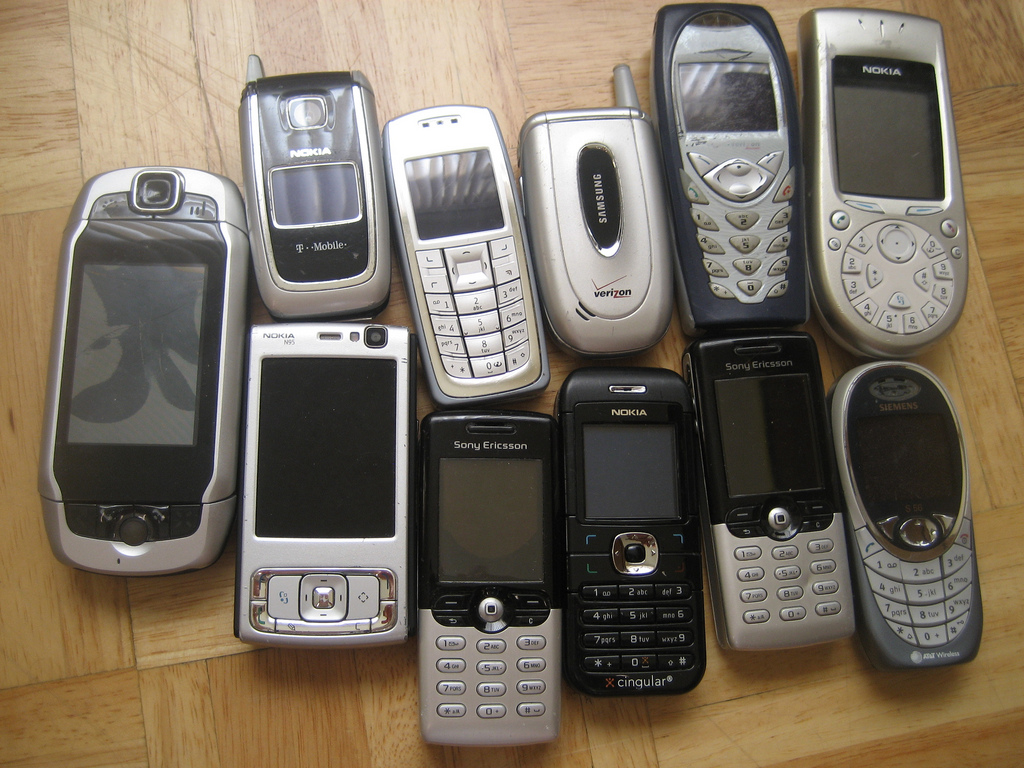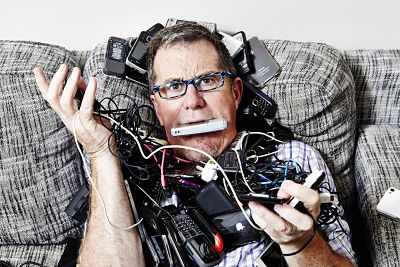More than 6,000 locations around Australia have been nominated by the public, local councils, state government, community representatives and businesses as having appalling mobile phone reception under the federal government’s $100 million Mobile Phone Black Spot Programme.
Victoria notched up the most reports – 2,029, followed by NSW with 1,780, Queensland with 897 complaints and Western Australia with 523. ACT-dwellers were by far the happiest with their mobile reception with only four complaints while the Northern Territory registered only 25.
An interactive map on the Department of Communication’s website means you can view the number of reports – which were not independently verified – by postcode, town, school, address or geographical coordinates but only until October 15, when the database will be closed and taken down.
The idea is to gather more detailed information over the next week by asking people to check the locations included on the database, some of which might currently be vague, like a suburb, and suggest more specific locations, such as a street or house.
A spokesman for Paul Fletcher, the Parliamentary Secretary to the Minister for Communications, said the short timeframe was because the competitive tendering process was due to start in the next few weeks. He added that it was preceded by an eight-month public consultation to nominate mobile black spots.
Telstra, Optus and Vodafone will all be vying for a piece of the action, as will specialist mobile phone infrastructure providers, which should result in between 250 to 300 new base stations.
Under the selection process, each company nominates some of the database where they want to build a new base station or upgrade an existing one. Telcos will also double check the coverage of nominated locations they are interested in serving
“This (tendering process) will be weighted, it won’t just cover the more populated areas,” said the spokesman.
He said other factors would be taken into account, such as the number of kilometres of highway that a new or souped up base station would cover; the number of premises (business and residential) covered and the number of square kilometres in area that would benefit.
Mr Fletcher has said that the database is likely to be an over-estimate of poor mobile coverage areas.
“Although 6,000 locations have been nominated, this does not mean that there are 6,000 locations where a new base station is required,” Mr Fletcher said.
“Initial analysis suggests that in many cases the nominated locations are within a few kilometres of another nominated location, meaning that one base station may be able to provide coverage to multiple nominated locations.”
Mr Fletcher said that around 4,800 locations reported as having bad coverage had at least 30 per cent of their area within a 10km radius had coverage today.
The Mobile Black Spot Programme would improve mobile coverage along major transport routes, in small communities and those at risk from natural disasters as well as communities that experienced high seasonal demand, for example, because of tourism.
The Government has repeatedly insisted that its $100 million scheme will leverage an extra $100 million in investment from state and territory governments, local councils and industry. Contributions may be cash or in-kind, for example, providing leasehold to a base station site at little or no cost, help with civil works or access to council-owned infrastructure.
Australian Local Government Association (ALGA) Chief Executive Andrew Beresford-Wylie previously told Government News that although remote local councils viewed improving limited mobile phone coverage as imperative they were ill-equipped to meet match-funding demands.
“Rural and remote councils are generally the least capable financially of providing co-contributions for projects,’’ Mr Beresford-Wylie said.
“These communities are currently without mobile service because of the prohibitive cost of deploying the service and are financially struggling themselves.”
Base station locations selected for funding will be announced in the first half of 2015 and the first base stations are slated to be rolled out in the second half of 2015.
Comment below to have your say on this story.
If you have a news story or tip-off, get in touch at editorial@governmentnews.com.au.
Sign up to the Government News newsletter
7 thoughts on “Revealed: Australia’s worst spots for mobile phone coverage”
Leave a comment:
Most read
Scathing report finds little has changed at PwC
Qld council welcomes progress on massive battery system
Inquiry to consider how federal govt can address councils’ sustainability issues
‘Local’ procurement turns out not to be so local, committee hears
Another report finds local government falling down on cyber security




I live in Upper Caboolture and today I have no bars on my mobile and I am with Telstra. At times I get up to two bars. Totally useless in this day and age, and there are new subdivisions happening all around me. Good communication is a necessary part of todays lifestyle and this situation is simply not good enough.
Hi,
Did you take into account the state of Tasmania?
Tasmania has many black spots round the state.
Mostly in Launceston,the west coast and some parts of the North east.
Kind Regards
Zac
I guess its difficult as we are a huge landmass with a relatively small population – but gee it would be nice sometimes to have a decent connection where I live in northern NSW
While it is great to see rural and remote areas getting attention, it seems that those in metropolitan black spot areas continue to miss out. Enquiries from people in these areas are politely rebutted as being out of scope. Urban fringe dwellers appear to be the main losers. After well over 10 years of promises from telcos about improvements including 3G and 4G roll outs the reception seems worse than ever.
Codes for secure online transactions, urgent job hunting leads and a host of other communications that businesses expect customers and partners to quickly turn around with this technology are impracticable. No amount of explaining that mobile reception is hopeless and “please use the land line” (which also seems to go down for several days at a time more than once a year) seems to get the point across to everyone.
The digital divide is supposed be closing not getting wider. Goodness knows how much wider it will get if we miss out on decent NBN technology too. Satellite connections are regularly ruined by passing aircraft and bad weather.
Oh goodness- get over it! We managed for hundreds and thousands of years and more, WITHOUT this technology.
Anyone concerned about the possible detrimental effects on our health all these new mobile towers may have???
Amazes me. Ignorance is bliss…
Go back then and live with the monkeys!!!! How about thinking about how much things have improved and then don’t use cars, washing machines, tv’s and have candles to light your cave.
I am sitting in front of my PC writing these comments knowing that if somebody phones my mobile the call will be a failure. We have had this situation for decades and we are in a coastal suburb of Sydney caught in a “dead zone” between two phone towers that no phone companies want to fix. Personally I think the phone companies should wear “Ned Kelly hats” for charging us for a non existent phone service when we are home . Not good enough in 2021